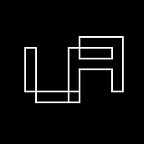Project UNISCAN launch
UNISCAN is a new NFT browser project launched by UniArts. The goal of UNISCAN is to build a more functional and professional NFT browser for users to discover new valuable NFTs.
The UNISCAN project was supported by the web3 foundation grants program to launch the nft_explorer. With this funding, UNISCAN completed the launch and developed the core components and base codes. These components and codes are open-sourced under the MIT license, meaning that any project can copy and modify these codes without any restriction.
Core components
In the grant’s milestone 1, we implemented three core components. These three core components are used to discover NFTs on blockchains.
- An EVM log tracking lib using an ethereum filter.
This is an EVM log tracker developed using rust programing language. It uses the Ethereum JSON RPC API, allowing it to be used to develop trackers for any blockchain that is compatible with the Ethereum JSON RPC API. This library currently implements NFT trackers for Ethereum, Moonbean, Darwinia Pangolin, and Polygon. Other similar blockchain NFT trackers can be easily implemented by referring to these implementations.
Code: https://github.com/uni-arts-chain/evm-nft-tracker
Usage: https://github.com/uni-arts-chain/evm-nft-tracker#usage
2. An EVM logs tracking lib using substrate event.
UNISCAN pays attention to the NFT tracking of the Polkadot ecosystem, making sure that if one substrate chain has the EVM pallet but is not compatible with JSON RPC API, the user has the option of using this library to track the NFTs. This library is developed using the Ruby programing language.
Code: https://github.com/uni-arts-chain/substrate-nft-tracker
Usage: https://github.com/uni-arts-chain/substrate-nft-tracker#usage
3. A lib to identify the NFTs
This library can be used to determine whether a contract is ERC721 or ERC1155, as well as utilized in obtaining the metadata of its token.
This library is just two ruby util classes, and they are also very simple to use.
Code:
- https://github.com/uni-arts-chain/substrate-nft-tracker/blob/main/lib/erc721_contract.rb
- https://github.com/uni-arts-chain/substrate-nft-tracker/blob/main/lib/erc1155_contract.rb
Models
In the grant’s milestone2, we implemented the whole system includes the models. The models are the most important part of the whole system. It defines the data structure and business logic and is the foundation of the ecosystem.
The models can support multiple blockchains and define a set of data structures compatible with ERC721 and ERC1155, which also supports ERC721 and ERC1155 NFT at the same time.
For more information, please see the Document, Description in the grant application can also help.
Future plan
After the functions described in the grant are implemented, UNISCAN will do market research and a product redesign to make UNISCAN functions and UI truly meets the market needs.
We thought about some important things to do:
- Support the NFTs of Statemine
- Support more evm based chain
- Support wasm based NFTs
- Support more NFT types or specifications, such as RMRK
- Market data & view
- Record important addresses and level them
- Statistic chart, such as transfer frequency statistic
- Signup & Sign in. Add NFTs to the favorites.
We need to make a trade-off. After deciding what to do, we will do a detailed design. We believe that UNISCAN will become the most important NFT infrastructure soon.
